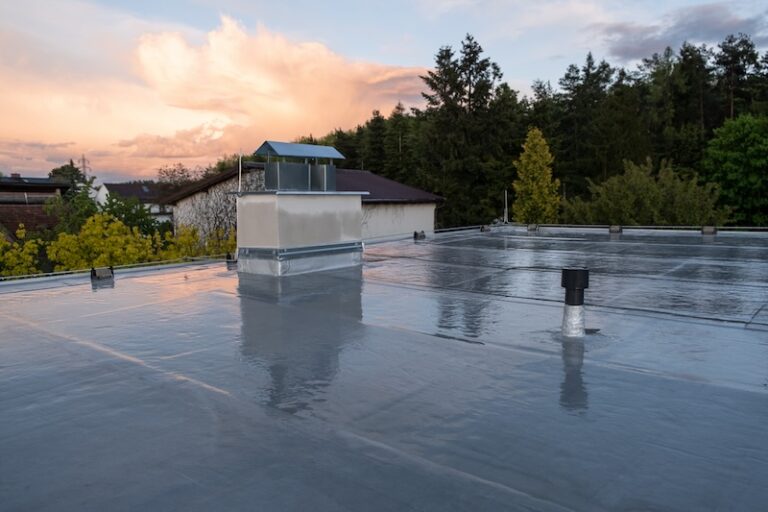Local Flat Roof Repairs are crucial for preserving the integrity of your property. From preventing costly damages to addressing structural issues, it’s essential to stay on top of maintenance tasks. Let’s delve into the world of flat roof repairs.
Importance of Local Flat Roof Repairs
Regular maintenance and repairs of flat roofs are essential for preserving the integrity of a property and ensuring its longevity. Neglecting these repairs can lead to a host of issues that can be both costly and inconvenient in the long run.
Preventing Costly Damages
- Regular inspections and repairs can help identify and address small issues before they escalate into major problems.
- Leaving minor leaks or damages unattended can result in water seepage, leading to mold growth, rotting of the roof structure, and potential damage to the interior of the building.
- By investing in local flat roof repairs, property owners can avoid the need for extensive and expensive repairs or even premature roof replacement.
Structural Issues Due to Neglect
- Failure to address issues such as ponding water, blistering, or cracks in the roof membrane can compromise the structural integrity of the roof.
- Over time, neglecting repairs can weaken the roof’s support system, leading to sagging, buckling, or even collapse in severe cases.
- Ignoring the signs of damage on a flat roof can result in not only costly repairs but also potential safety hazards for occupants of the building.
Common Flat Roof Problems
Flat roofs are prone to a variety of issues that may require local flat roof repairs to maintain their integrity and functionality.
Weather Conditions Impact
Weather conditions play a significant role in the deterioration of flat roofs. Extreme heat, freezing temperatures, heavy rain, and strong winds can cause damage over time.
- Prolonged exposure to UV rays can cause the roofing material to degrade and become brittle.
- Freezing temperatures can lead to the expansion and contraction of the roofing material, causing cracks and leaks.
- Heavy rain can result in ponding water on the roof, leading to water infiltration and structural damage.
- Strong winds can lift or displace roofing materials, exposing the underlying structure to potential damage.
Age and Wear
Flat roofs that are older or have been subjected to wear and tear over time are more susceptible to various problems that may require repairs.
- Signs of aging such as cracks, blisters, or sagging areas indicate the need for immediate attention to prevent further damage.
- Improper installation or maintenance can also contribute to premature aging and deterioration of flat roofs.
- Regular inspections and maintenance can help identify and address issues early on, extending the lifespan of the flat roof.
DIY Repairs vs. Professional Services
When it comes to flat roof repairs, homeowners often face the decision of whether to attempt a do-it-yourself fix or hire a professional roofing service. Both options have their advantages and disadvantages, so it’s important to consider various factors before making a decision.
Advantages and Disadvantages of DIY Repairs
DIY repairs can be cost-effective and give homeowners a sense of accomplishment. However, they require time, effort, and a certain level of skill. Without proper knowledge and experience, DIY repairs can lead to further damage and additional expenses.
- Advantages:
- Cost-effective
- Sense of accomplishment
- Disadvantages:
- Time-consuming
- Require skill and knowledge
- Potential for further damage
When to Hire Professional Roof Repair Services
There are certain situations where it’s best to hire professional roof repair services to ensure quality workmanship and long-lasting results.
- Examples:
- Extensive roof damage
- Leaks that are difficult to locate
- Complex roof design
- Need for warranty coverage
Safety Considerations for DIY Flat Roof Repairs
While DIY repairs can be tempting, safety should always be a top priority when working on a flat roof. Here are some important safety considerations to keep in mind:
-
Always use proper safety equipment such as harnesses, gloves, and non-slip footwear.
-
Avoid working on the roof during extreme weather conditions or when the surface is wet or slippery.
-
Be cautious around power tools and equipment to prevent accidents and injuries.
Local Flat Roof Repair Techniques
Flat roofs are prone to various issues that may require immediate repairs to prevent further damage. Here, we will discuss different repair methods commonly used for local flat roofs, the materials and tools needed, and the step-by-step process of repairing a flat roof.
Repair Methods for Flat Roofs:
- 1. Patching: Patching involves sealing small cracks or holes with roofing cement or sealant to prevent water infiltration.
- 2. Membrane Replacement: If the flat roof membrane is damaged, a section of the membrane can be replaced with new material.
- 3. Recoating: Applying a new layer of coating over the existing roof surface can help extend the lifespan of the roof and provide additional protection.
Materials and Tools Needed:
- – Roofing cement or sealant
- – Flat roof membrane material
- – Roof coating material
- – Roofing nails or screws
- – Roofing brush or roller
- – Roofing knife or scissors
Step-by-Step Process of Repairing a Flat Roof:
- Clean the repair area by removing any debris or dirt.
- Locate the source of the leak or damage on the flat roof.
- Apply roofing cement or sealant to fill in cracks or holes.
- If membrane replacement is needed, cut out the damaged section and install a new piece.
- Recoat the repaired area with a new layer of roof coating for added protection.
- Inspect the repair to ensure it is properly sealed and secure.
Last Word
In conclusion, maintaining your flat roof through timely repairs can save you from major headaches down the road. Don’t wait until it’s too late to address issues – take proactive steps to keep your property in top condition.
